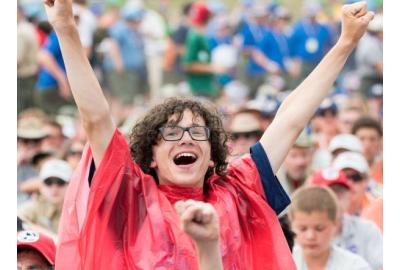Heatstroke – Prevention, Symptoms and Treatments
‘Tis the season!
I know, normally that sentiment goes along with the holidays – but it works here as well. It is seriously hot out, and the heat waves are here to stay. Along with the beauty that is summer vacations and adventures, there is the underlying risk of heatstroke. Heatstroke is a condition caused by your body overheating and is caused by the failure of the body’s temperature-regulating mechanism when exposed to excessively high temperatures.
We all want to be outside and enjoy the beautiful weather and blooming nature, so let’s do it with some awareness. This blog will cover preventative tips, symptoms, and treatment of heatstroke.
Heatstroke Prevention
You may not be able to change the weather, but you can adjust how you (and your family) prepare for time spent adventuring outside.
- Drink lots of water and fluids and remember – drinks with caffeine (coffee, soda, etc.) do not count toward your fluid intake. They actually serve as a diuretic and can lead to additional dehydration. Water and electrolytes are ideal (I like Ultima electrolytes). Keep a canister in your pack, so you are always prepared! Start drinking your fluids early; not just when you walk outside. It is easier to stay hydrated when you have easy access to fluids. Consider investing in a reusable water bottle or pack to stay hydrated and healthy on the go (check out our selection of go-to hydration essentials here).
- Dress appropriately. Kind of obvious… but really – now isn’t the time to don the Sauna Suit (yep, it’s a real thing). Wear lightweight clothing that allows your body to self-regulate its temperature.
- Work your way up to time in the heat. Your body is capable of amazing feats. With proper time and conditioning, you can acclimate to the higher temperatures.
- Use sunscreen! This is important. Sunburn affects your body’s ability to cool itself. The key to using it is to reapply often (think every hour, especially if you are swimming and sweating) and to apply it to dry skin.

Recognizing Heatstroke Symptoms
Heatstroke is the most severe diagnosis of the main 3 heat-related conditions. The first two conditions to watch for (before it escalates) are heat cramps and heat exhaustion.
Sometimes, no matter how much you prepare, things happen; however, the earlier you can catch the symptoms, the better! Delayed treatment of heatstroke can lead to damage of the brain, heart, kidneys and muscles. The longer treatment is delayed, the higher the risk of complications or death. Here is what to keep an eye out for.
- High core body temperature. This is the main sign of heatstroke. Major red flag for any temperature creeping up to 104 F (40 C).
- Changes in sweating. If heatstroke is brought on by warm weather, your skin will feel hot and dry to the touch (no temperature regulation through sweating). If it is brought on by exertion or strenuous exercise, your skin might feel clammy or slightly moist.
- A headache or nausea/vomiting.
- Rapid breathing or racing heart rate. When your body is trying to cool itself, your heart works overtime.
- Altered mental state or behavior. Confusion, dizziness, agitation and slurred speech are all signs on heatstroke.

Treating Heatstroke
If you notice that you or anyone else is experiencing faintness, fatigue, muscle cramps, dizziness, low blood pressure upon standing, heavy sweating, weak/rapid pulse, nausea, headache or cool/moist skin with goose bumps while in heat, it is time to intervene and take action immediately!
First, Call 911 or your local emergency services number. Secondly, get the person out of the sun and into the shade or indoors. Remove any excess clothing and use any means available to cool them off. Some cooling methods include: getting them into a cool bath or shower, spraying with a garden hose, setting them up in front of a fan while misting with water, or using ice packs/cold, wet towels on their head, neck, wrists, armpits, and groin.
Scouting is a lifestyle, and staying diligent is one of the best ways to have fun on all of your adventures. By being aware and mentally awake, you increase the level of fun for everyone. Now, happy adventuring!














